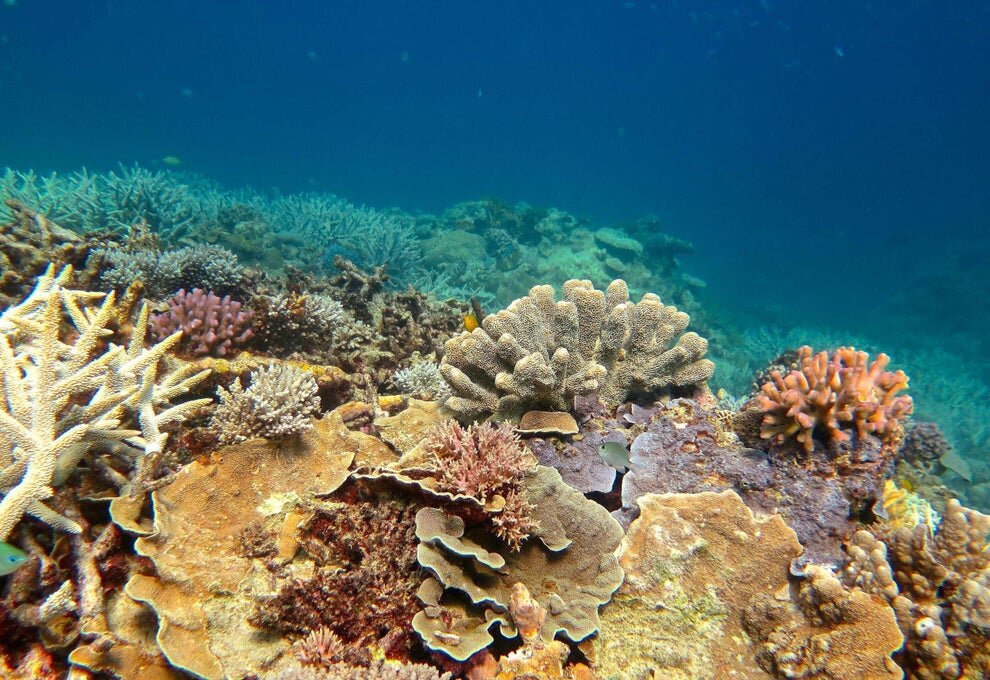No Evidence for Dramatic Loss of Great Barrier Reef Corals
/A 2020 study of the Great Barrier Reef that set alarm bells ringing in the mainstream media is based on faulty evidence, according to Australian scientist and leading coral reef authority, Professor Peter Ridd. The study claims that between 1995 and 2017 the reef lost half its corals, especially small baby colonies, because of global warming – but Ridd says the claims are false.
The breathtakingly beautiful Great Barrier Reef, labeled by CNN as one of the seven natural wonders of the world, is the planet’s largest living structure. Visible from outer space and 2,300 km (1,400 miles) long, the reef hugs the northeastern coast of Australia. A healthy portion of the reef is shown in the image below.
CREDIT: DAVID CHILD, EVENING STANDARD.
But corals are susceptible to overheating and undergo bleaching when the water gets too hot, losing their vibrant colors. During the prolonged El Niño of 2016-17, higher temperatures caused mass bleaching that damaged portions of the northern and central regions of the Great Barrier Reef. Ridd’s fellow reef scientists contended at the time that as much as 30% to 95% of the reef’s corals died. However, Ridd disagreed, estimating that only 8% of the Great Barrier Reef suffered; much of the southern end of the reef wasn’t affected at all.
Likewise, Ridd finds no evidence for the 50% loss of corals since 1995 claimed in the recent study. He says the most reliable data on coral extent comes from AIMS (the Australian Institute of Marine Science), who have been measuring over 100 reefs every year since 1986. As the following figure illustrates, AIMS data shows that coral cover fluctuates dramatically with time but there is approximately the same amount of Great Barrier Reef coral today as in 1995. Adds Ridd:
There was a huge reduction in coral cover in 2011 which was caused by two major cyclones that halved coral cover. Cyclones have always been the major cause of temporary coral loss on the Reef.
It can be seen that the coral cover averages only about 20% in the years since 1986, when AIMS measurements began. But a 2019 research paper reported that the first reef expedition back in 1928-29 discovered very similar coverage: on a reef island known as Low Isles, the coral cover ranged from 8% to 42% in different parts of the island. So essentially no coral has disappeared over a period of 90 years that encompasses both warming and cooling periods.
The paper’s authors did find that the coral colonies on Low Isles were 30% smaller in 2019 than in 1928-29, and that coral “richness” had declined. Apart from its faulty conclusion about coral loss, the 2020 study also found smaller colony sizes throughout the reef, even though the relative abundance of large colonies was unchanged.
Nevertheless, the most recent AIMS report records small gains in the cover of hard corals in the central and southern Great Barrier Reef, following another mass bleaching event in late 2019. Hard corals are the primary reef-building corals; soft corals don’t form reefs.
Even more encouraging news for coral reef health comes from a just-reported survey of coral reefs on the opposite side of the country – the Rowley Shoals, a chain of three coral atolls 300 km (190 miles) off the coast of northwest Western Australia. Following an extensive marine heat wave in December 2019, an April 2020 survey found that up to 60% of the Rowley Shoals corals had become a pallid white (left image below). Yet a follow-up survey just six months later revealed that much of the bleached coral had already recovered (right image) and that perhaps only 10% of the reef had been killed.
CREDIT: WESTERN AUSTRALIA DBCA.
Tom Holmes, the marine monitoring coordinator at Western Australia’s DBCA (Department of Biodiversity, Conservation and Attractions), said "We were expecting to see widespread mortality, and we just didn't see it … which is a really amazing thing." Holmes explained that, while high ocean temperatures cause coral to bleach, what is less well known is that bleached corals don’t die immediately. Bleaching is initially just a sign of stress, but if the stress continues for a long time, it does lead to mortality.
However, Holmes – ever the cautious scientist – feels the reef may have been lucky and dodged a bullet this time. That’s because the marine heat wave that caused the bleaching was short-lived, dissipating at the end of the Australian summer a few months ago and giving the corals a chance to recover.
The resilience of the Rowley Shoals is no surprise to Ridd. Despite having been fired from his position at James Cook University in northern Queensland for his politically incorrect views on the Great Barrier Reef and climate change, Ridd continues to push the case for more accurate measurements and better quality assurance in coral reef science.
Next: No Evidence That 2020 Hurricane Season Was Record-Breaking








